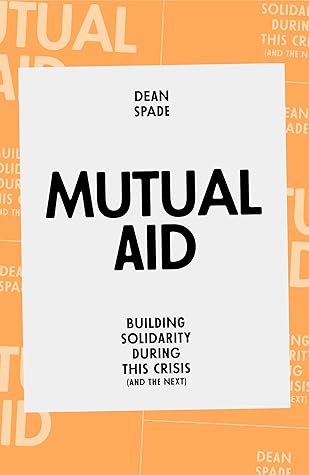More on this book
Community
Kindle Notes & Highlights
by
Dean Spade
Read between
November 27 - November 30, 2024
Here are five practices that set up efficient, effective consensus decision-making: 1. Creating Teams 2. Creating a Decision-Making Chart 3. Practicing Proposal-Making 4. Practicing Meeting Facilitation 5. Welcoming New People
Mutual aid is the best onramp for getting people involved in transformative action because they get to address things harming them and their communities
To win big, we need to build leaderless and leaderful groups. This means we want lots and lots of people involved, all of whom are building skills that help them do the work and bring new people into the work.
Some groups can do their work without raising money at all. Some groups can do their work just raising money through grassroots fundraising in their communities, taking small donations from many people. That kind of fundraising can avoid the problem with grant-making foundations attaching strings to grant money and trying to control the direction of the work.
At least two people should always be working together on tracking funds to help prevent theft. How money is earned and spent should be clear to all group participants. The group’s values should guide how money is spent—for example, the group should ensure that staff are paid fairly and equally rather than on the basis of the privileged status that comes with a professional degree, and should ensure that people are not pressured to overwork. Having clear and transparent budgeting and planning processes that can be understood by all participants, including people with no prior experience with
...more
Burnout is the combination of resentment, exhaustion, shame, and frustration that make us lose connection to pleasure and passion in the work and instead encounter difficult feelings like avoidance, compulsion, control, and anxiety.
Burnout is prevented or lessened when we feel connected to others, when there is transparency in how we work together, when we can rest as needed, when we feel appreciated by the group, and when we have skills for giving and receiving feedback.
Even in the face of the pain that being awakened to contemporary conditions causes, all of our work for change can be rooted in the comfort and joy of being connected to one another, accompanying one another, and sometimes being inspired by each other.
“mad map”—a guide we can make for ourselves that we can turn to when things go sideways or we feel ourselves slipping into more difficult states. A mad map can be like a gift to your future self, to help navigate the potentially dangerous waters of stress or conflict. It can guide you through the wild thinking, feeling, and behaviors that emerge when things are really rough, reminding you what helps and what harms during such times.
The only thing that keeps those in power in that position is the illusion of our powerlessness. A moment of freedom and connection can undo a lifetime of social conditioning and scatter seeds in a thousand directions.
Everywhere we look, we see signs that the systems we have been living under are collapsing, and something new must emerge if we are to survive.
Mutual aid helps people survive disasters of all kinds, mobilizes and politicizes new people, and builds the new systems and ways of being together that we need. The stronger we build our mutual aid projects, the more lasting our mobilizations can be.
Mutual aid is essential to all of our resistance work.
Ideally, our experiments with mutual aid and solidarity become bolder and bolder as experiences with our shared authority emancipate us from the illegitimate authority of dominant systems.
Our movements must contend with the structures in place in order to dismantle the weapons they use against our communities, and simultaneously build new ways of surviving that are based in our principles of liberation and collective self-determination.
As we deliver groceries, participate in meetings, sew masks, write letters to prisoners, apply bandages, facilitate relationship skills classes, learn how to protect our work from surveillance, plant gardens, and change diapers, we are strengthening our ability to outnumber the police and military, protect our communities, and build systems that make sure everyone can have food, housing, medicine, dignity, connection, belonging, and creativity in their lives. That is the world we are fighting for. That is the world we can win.


